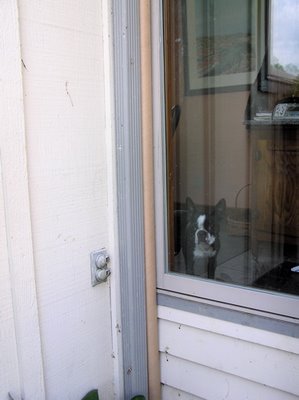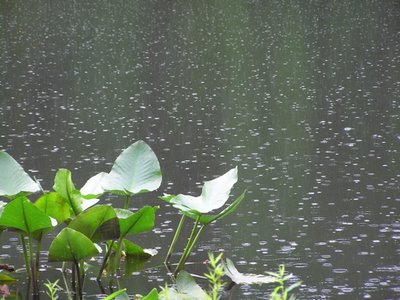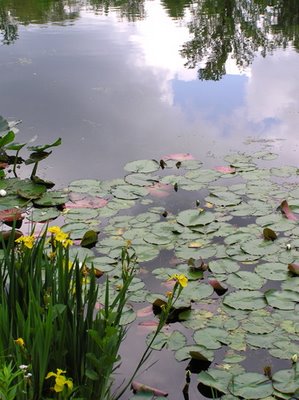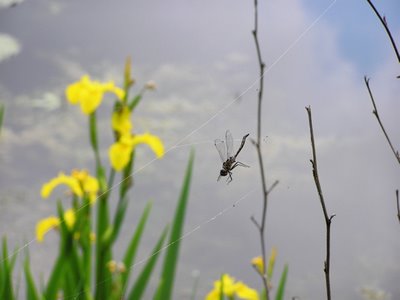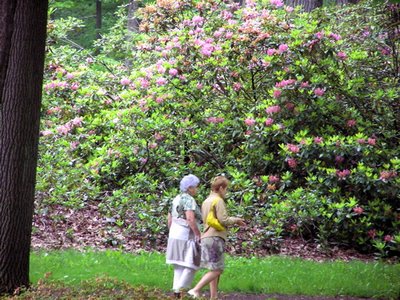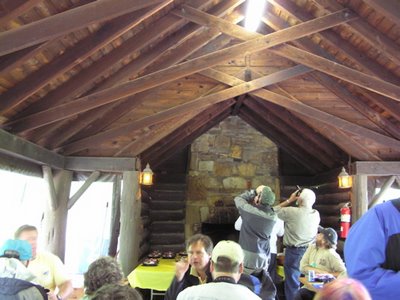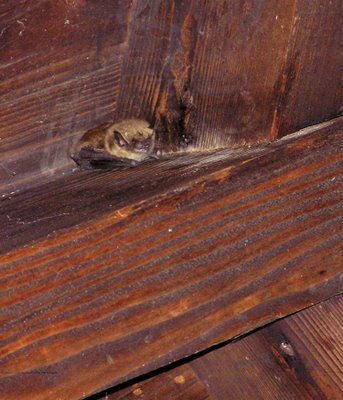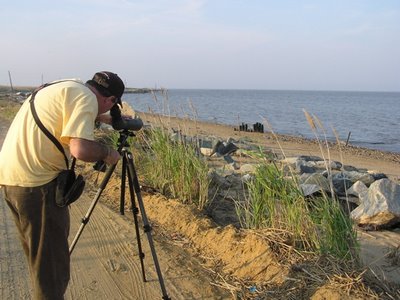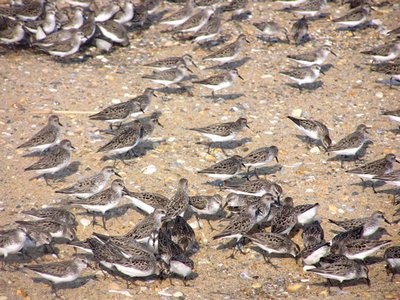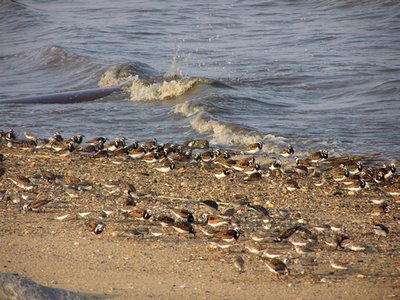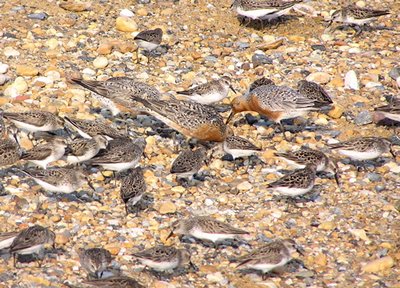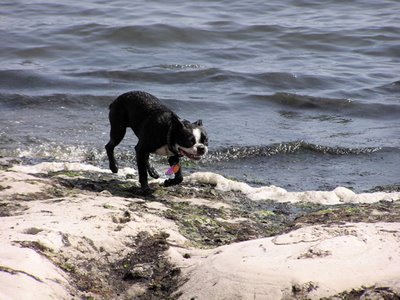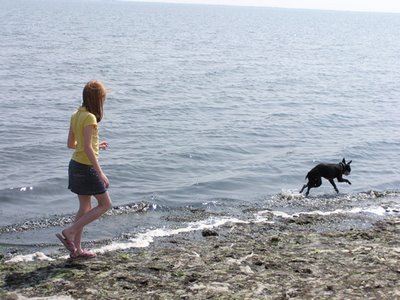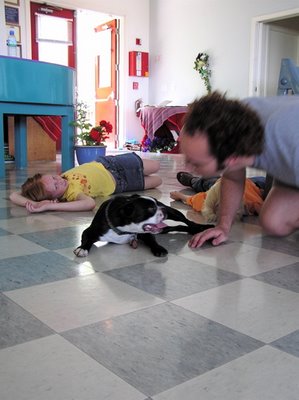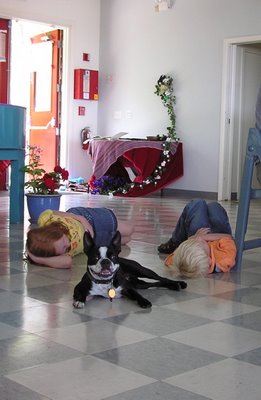Forcing Avis
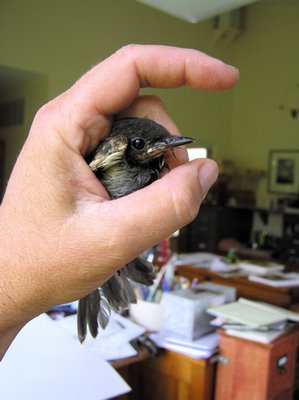 Avis, after medication, feeding, and a face-wash, June 29. Her eyes are bright, she's getting stronger and more uppity all the time, and that's what counts.
Avis, after medication, feeding, and a face-wash, June 29. Her eyes are bright, she's getting stronger and more uppity all the time, and that's what counts.June 29 (Thursday). I've been force-feeding Avis since midday yesterday. She's had two doses of Zithromax, some leftover antibiotic from one of Liam's bouts of pharyngitis. I kept it in the refrigerator thinking I might get a bird that needed it this summer. Forcing this little spirit to eat and drink is horrible. She's all mucky looking and hates being handled. I hate handling her, so we're even. I'm working in the studio around noon when I hear a small thunk, and I peek over to see Avis pecking a mealworm out of her dish. It's the first food she's taken of her own volition since the night of the 27th. Left to her own devices, she'd be dead now. For whatever reason. I may never know. But I have a suspicion that whatever is wrong with her, it's addressed by the antibiotic.
It's possible, I suppose, that she wasn't really ready to be released, and lacked the instinct to hunt on her own, and just got run down. But I can't reconcile that conclusion with her behavior in the fledging tent, which was to catch everything that flew by and eat mealworms from a pie plate. Why would that behavior cease when she was released? (Luther did regress, but not to the point that he lost interest in food. No, Luther's REAL interested in food. He just wants me to pop out of the house and administer it every couple of hours.) Maybe she had something bugging her on a low level, and when she was released, the stress and night out in the cold without much food to burn left her vulnerable to it. She had had a bout of anorexia as a young nestling, which I treated with a single dose of Zithromax--not wanting to burn out her digestive tract. She picked right up after the one dose. In retrospect, talking with my rehab-whiz friend Astrid, I probably should have given her a full course of antibiotics. Maybe it was festering the whole time, and took release time as its chance to strike her down. Dunno. Dunno nothin'. All I know is that I won't let her die, no way, nohow.
And so now it's June 30, noon, and Avis is still in the pet carrier, facing out the studio window so she can watch for Luther. The window is open so she can call to him, and he to her. I have mealworms and water in there, and I'm watching her papers to be sure that she's defecating regularly, for that's how I'll know she's eating. She's just had her third dose of Zithromax. I have no idea what the proper dosage of this drug would be. Let's see. Liam weighs 49 pounds and he gets a teaspoonful. Avis weighs what? An ounce? Two? So how do I divide a teaspoon into a portion that tiny? I just get the smallest drop I can in a dropper and pump it in. And it seems to be working. She's bright-eyed, perching well, not trembling, hard as hell to catch even in the carrier; she slips out and zooms around the little aviary and I catch her in midflight like a cat swooping a butterfly from the air. Not so fast, Missy. You have some more R & R coming your way. I'll watch her, give her a fourth dose in the morning, and turn her out into the fledging tent to try again. She's improved immeasurably in the time she's been confined. Now to see if she'll feed herself in the fledging tent, and then work on a re-release. I know Luther is going to be happy about that! Thank God I'm not traveling this month!
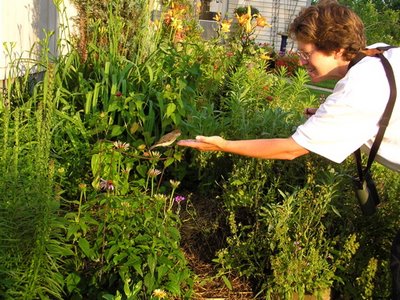 Luther comes in for subsidy, June 29. I had a hand-raised hummingbird named Adventure Joe who used to sit on this very plant support. I'm flashing back! Photo by my darlin' hubband.
Luther comes in for subsidy, June 29. I had a hand-raised hummingbird named Adventure Joe who used to sit on this very plant support. I'm flashing back! Photo by my darlin' hubband.Meanwhile, Luther is having a ball out in the big world. I awoke at 5:15 this morning and went out to see where he might be roosting. I called softly and heard an immediate answer from a tall ash tree by our driveway. He wouldn't come down. An hour later I went out, called his name again, and received a chip in response, followed by a begging call. It's uncanny--I have only to call Luther's name, and he answers back exactly as a young bird would answer its mother's location call. I call, he chips--and I locate him, just as his mother would. He flew down to my hand, accepted a mealworm, and went about his business. When he lands on my hand he's so light I can hardly feel him. And my heart is so light it floats on air.
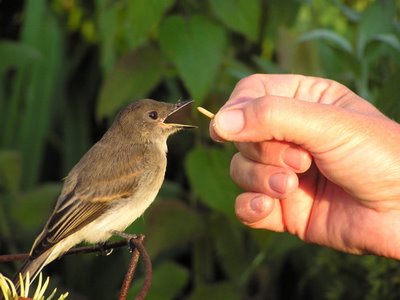 Luther opens wide! Photo by Bill "Shutterbig" Thompson, III.
Luther opens wide! Photo by Bill "Shutterbig" Thompson, III.

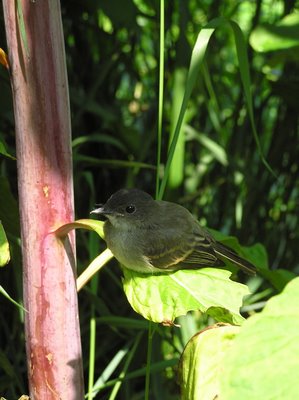
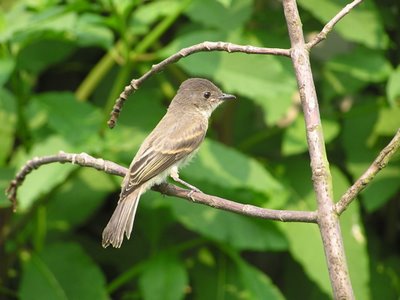
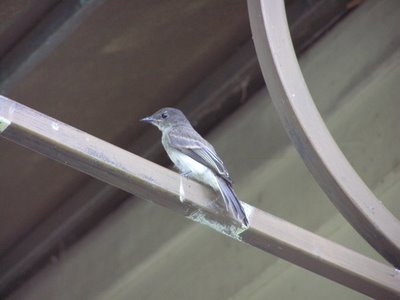
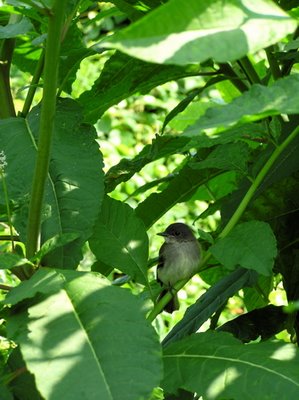
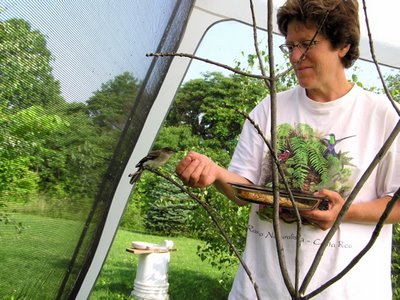
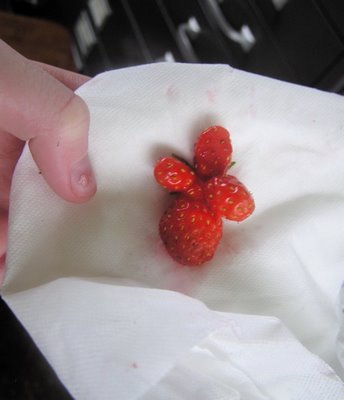
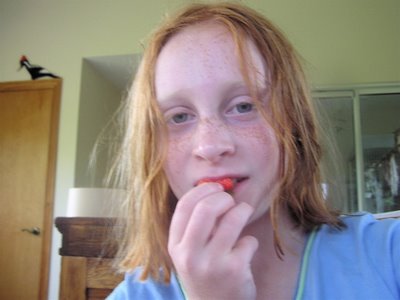
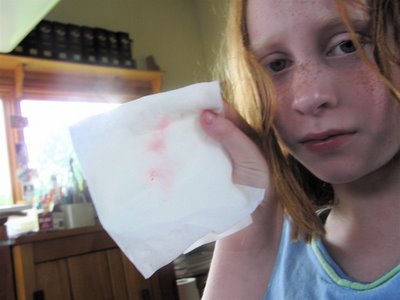
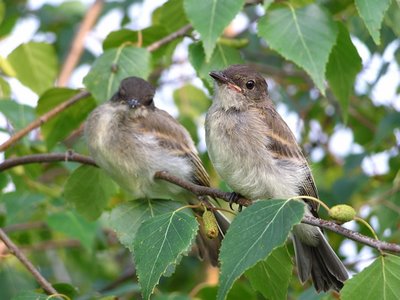
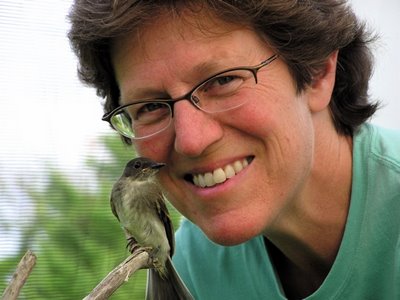
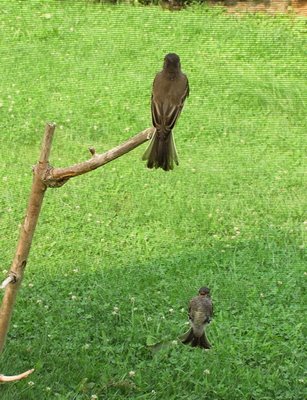
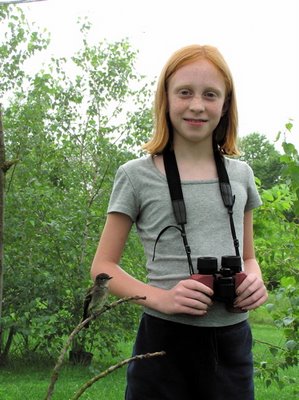
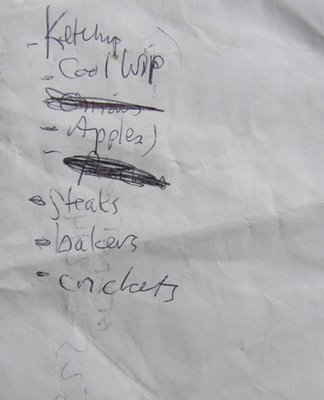
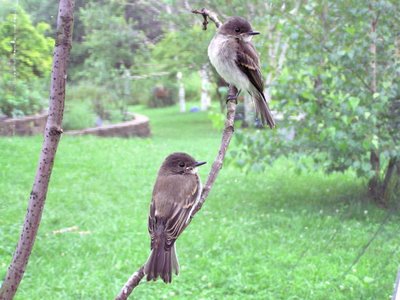
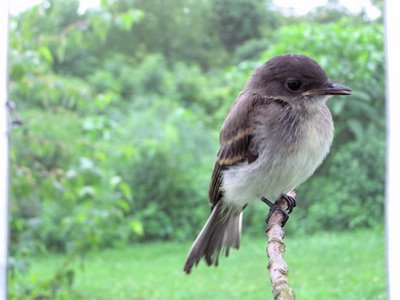
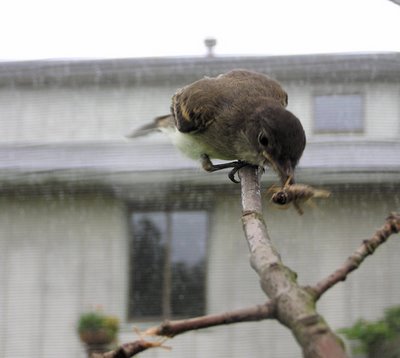
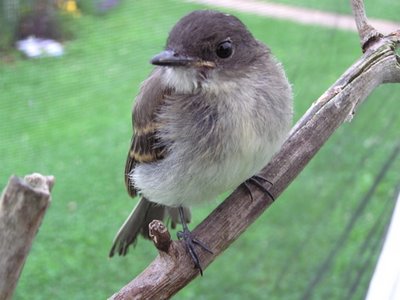
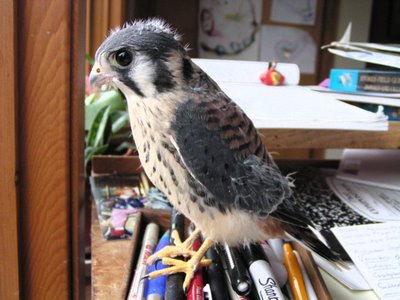
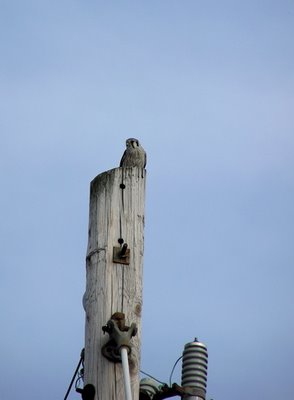
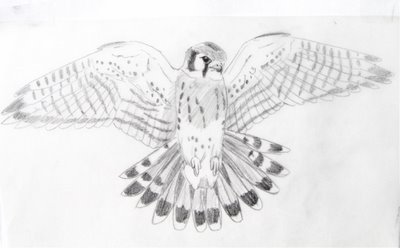
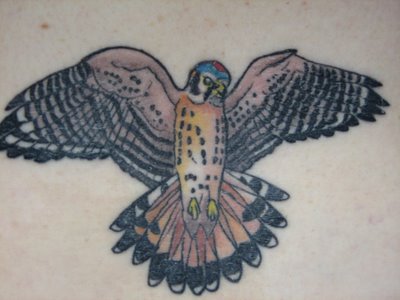

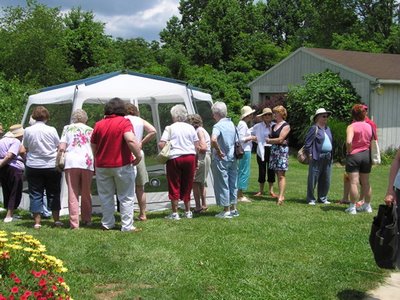
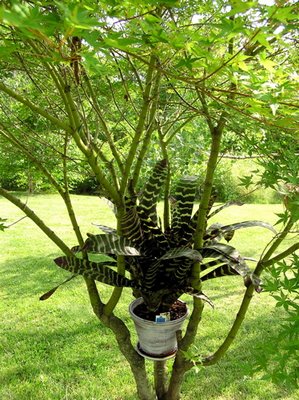
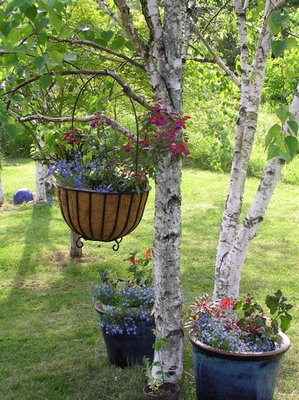


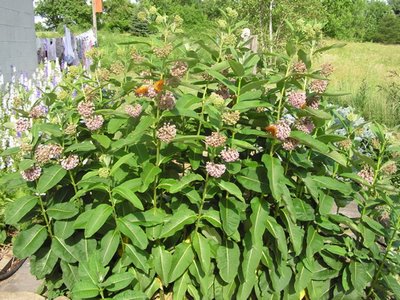

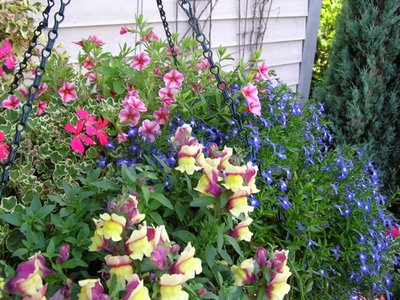

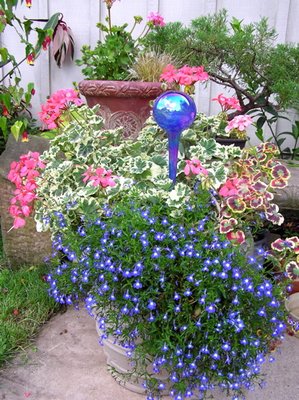
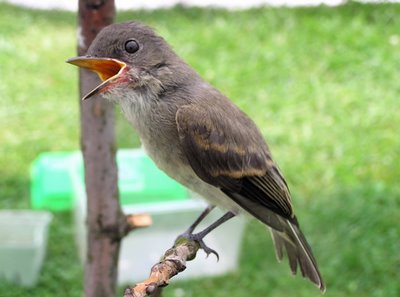
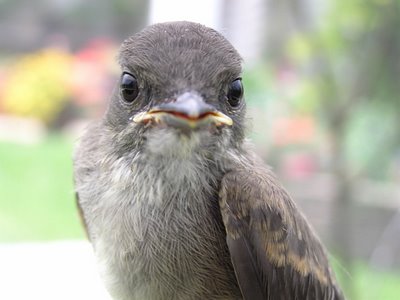
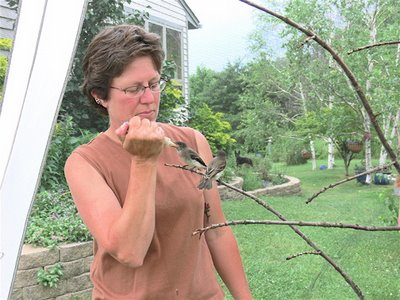
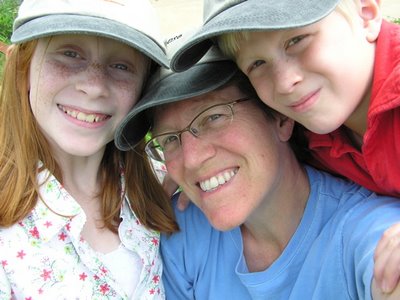
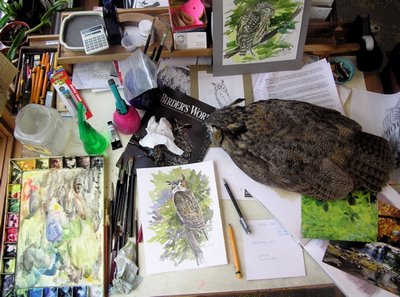
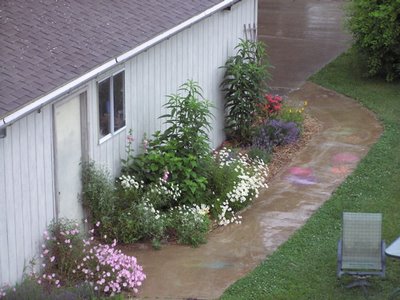
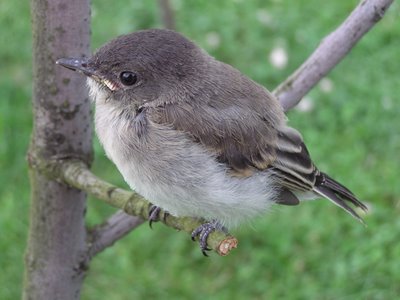

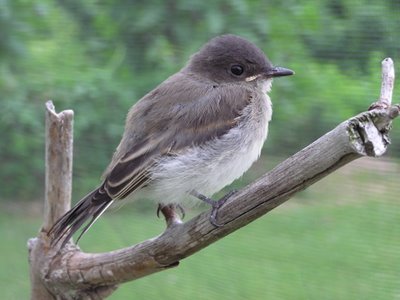
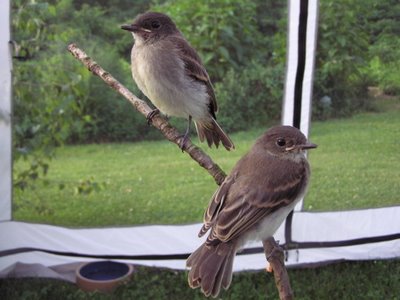
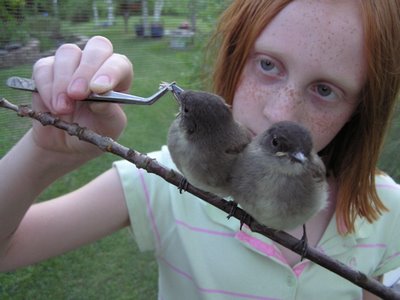
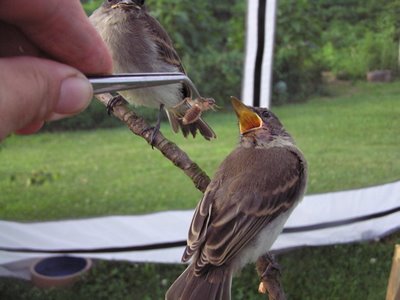
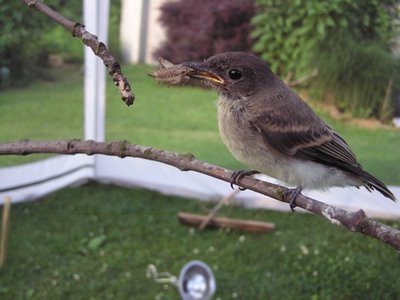
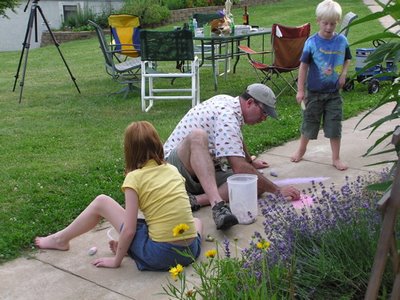
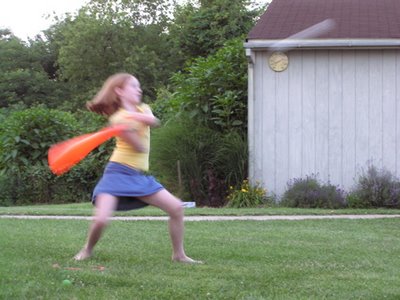
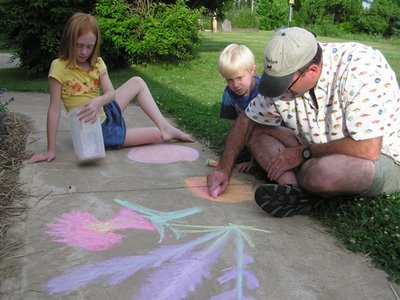
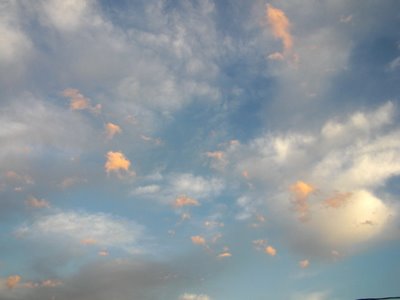
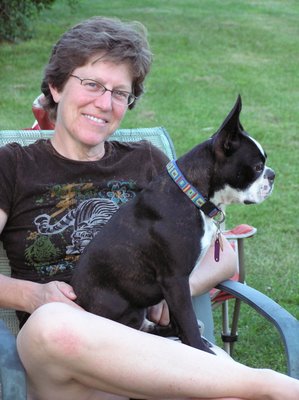
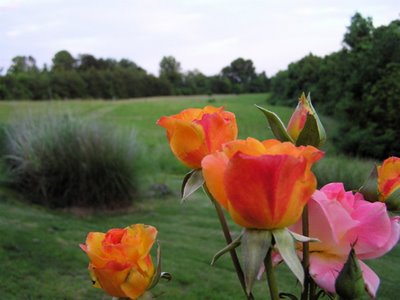
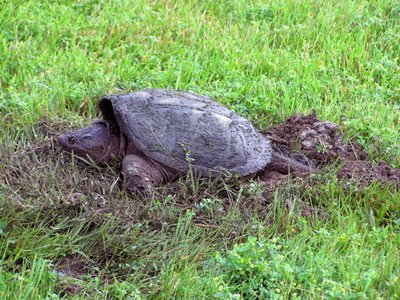
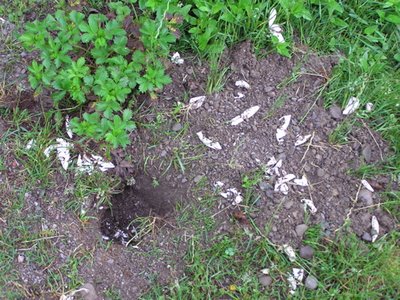
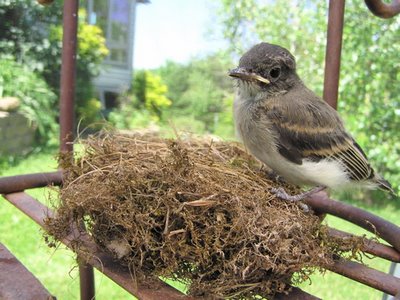
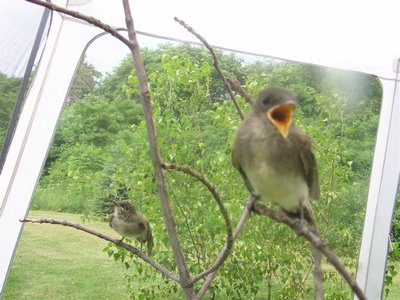
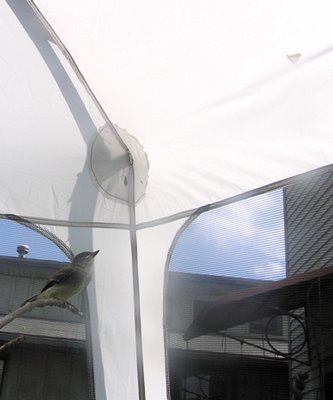
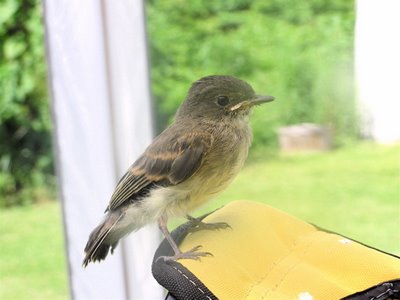
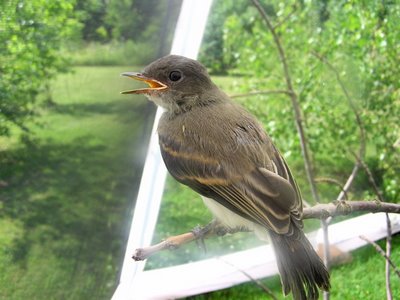
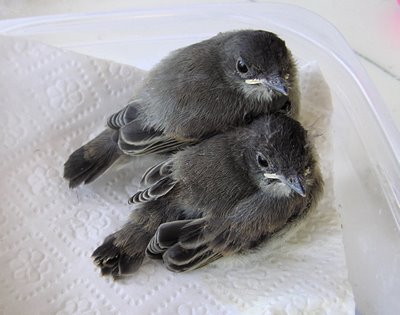
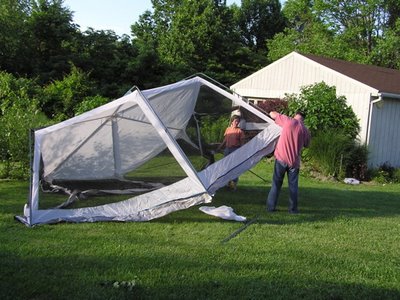
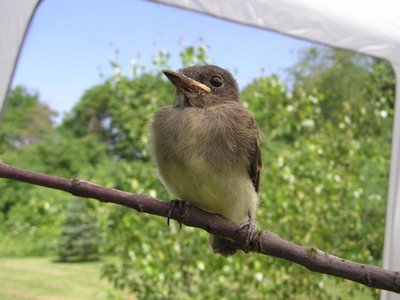
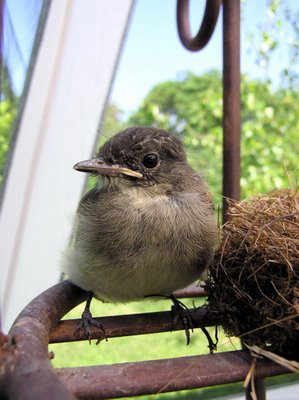
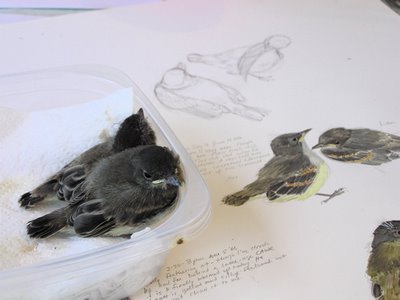

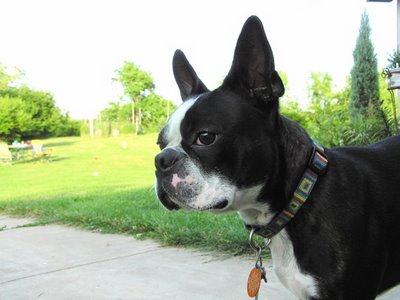
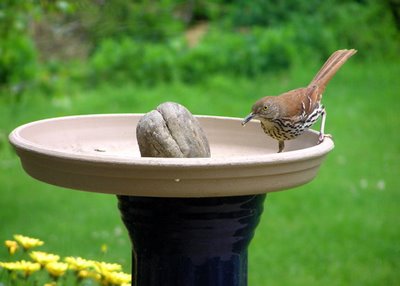
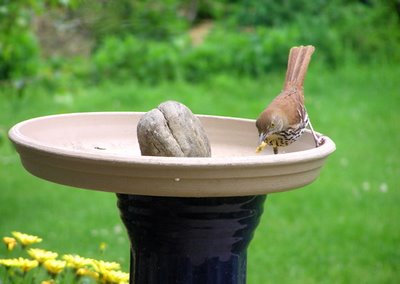
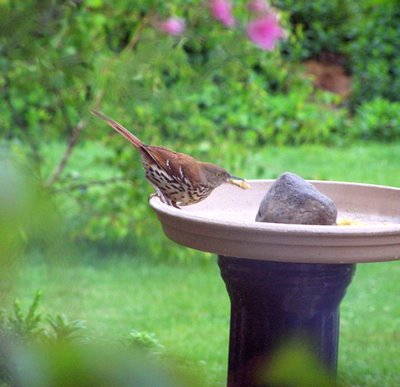
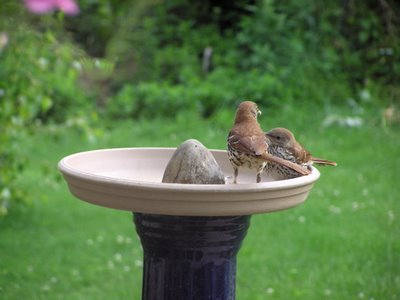
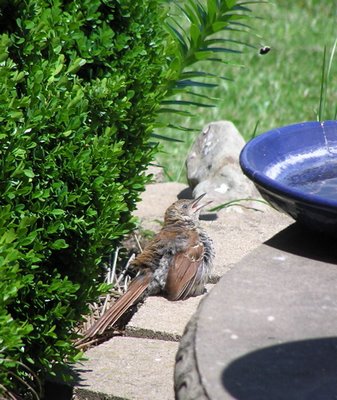
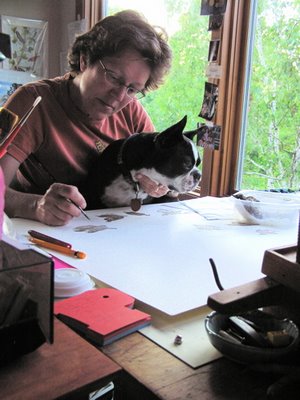
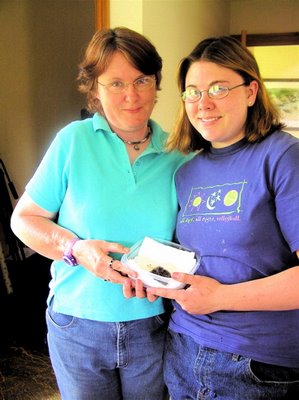
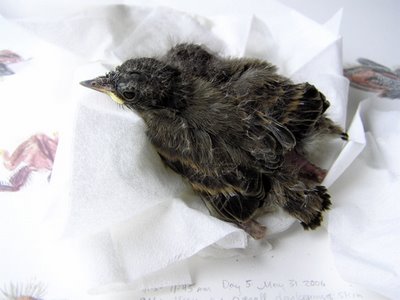
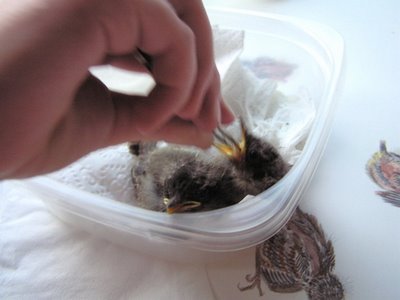
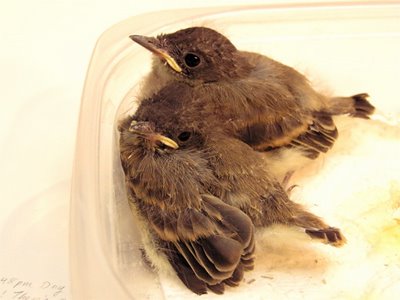
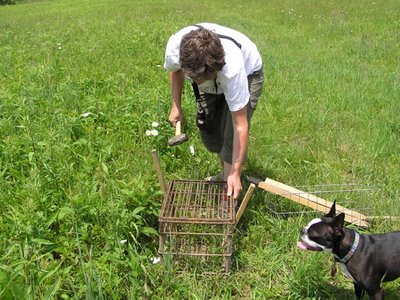
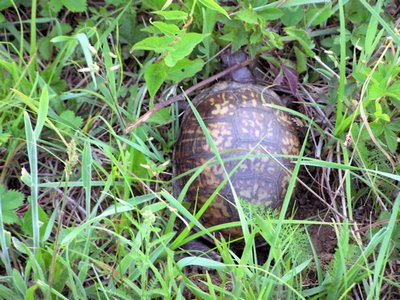
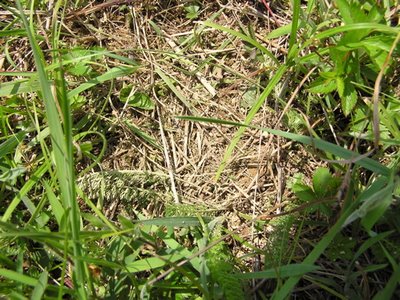
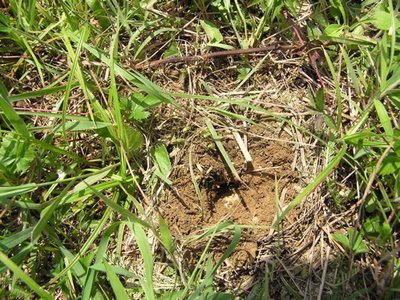
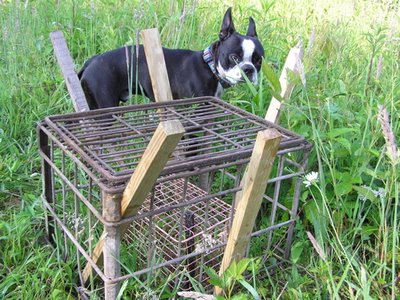
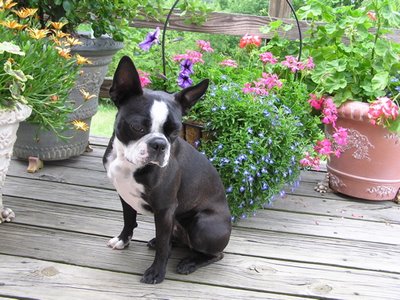
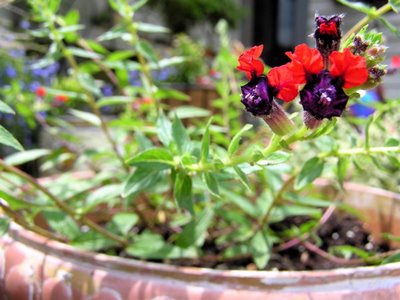

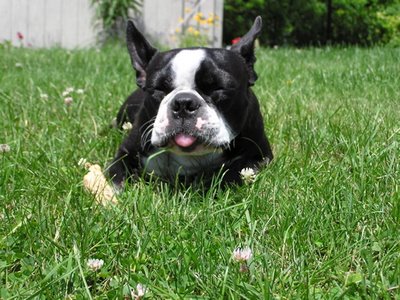
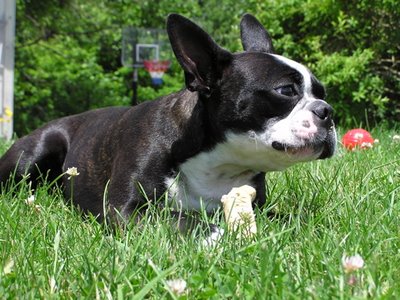
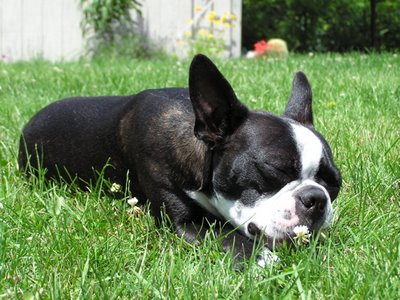
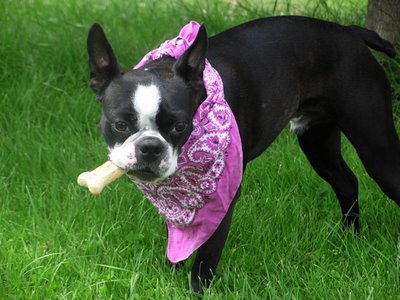
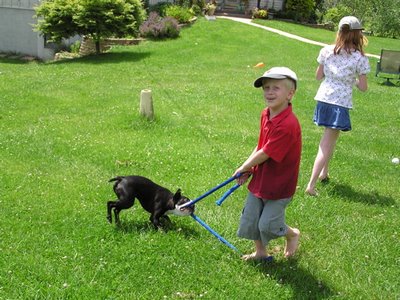
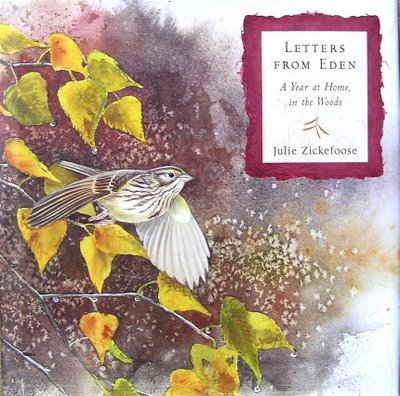
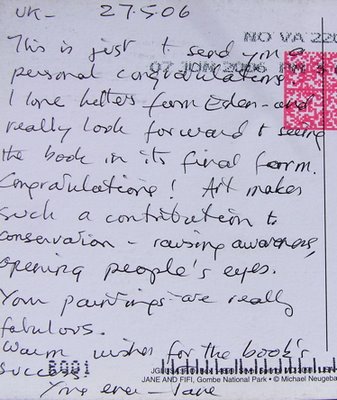
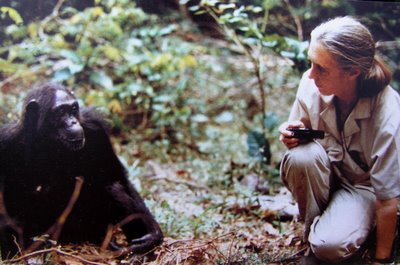
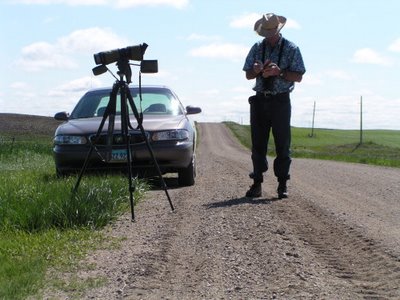
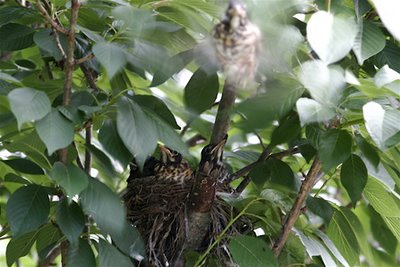
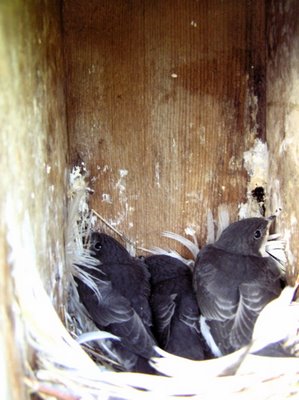
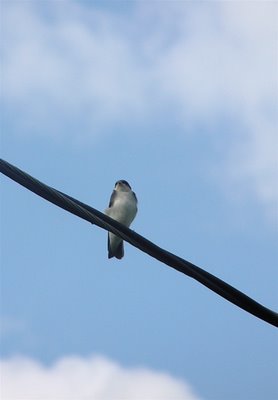
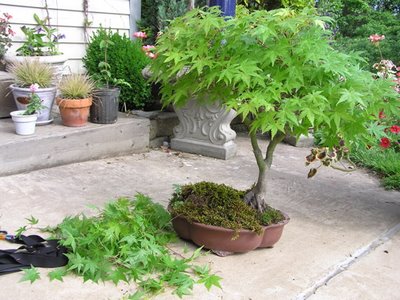
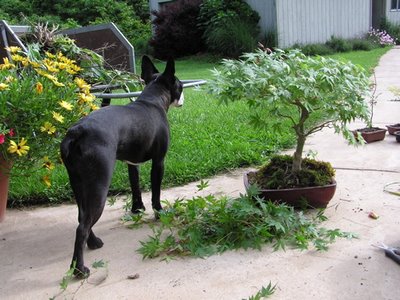
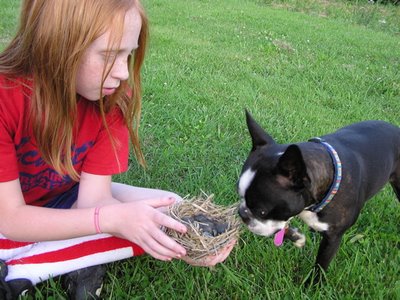



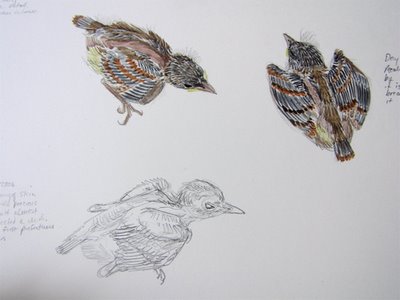
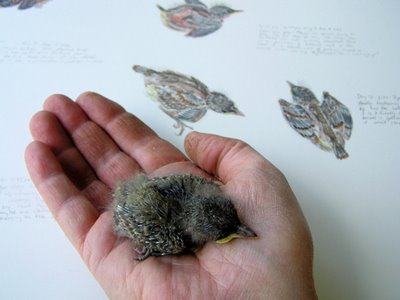
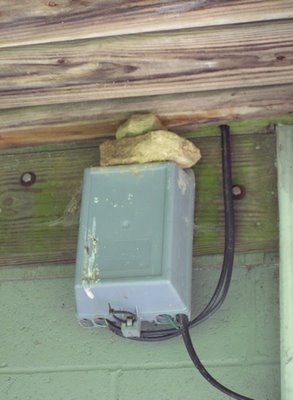
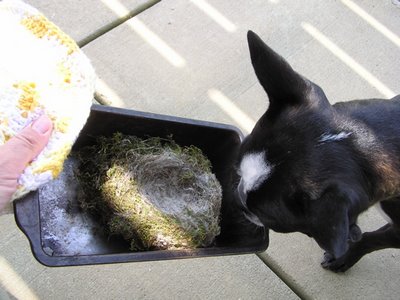
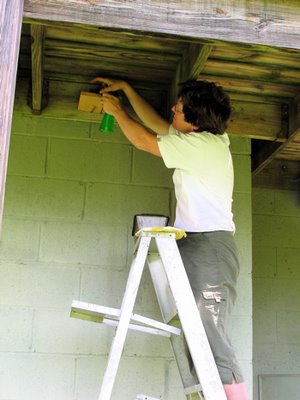
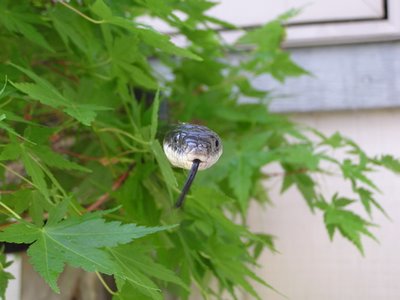
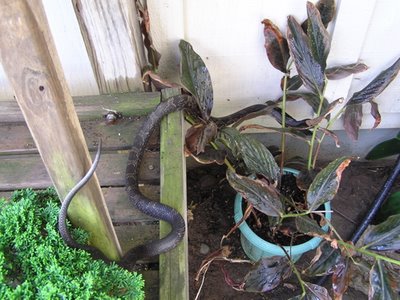

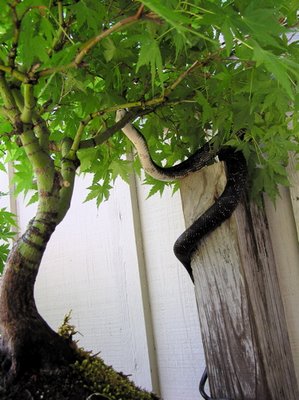
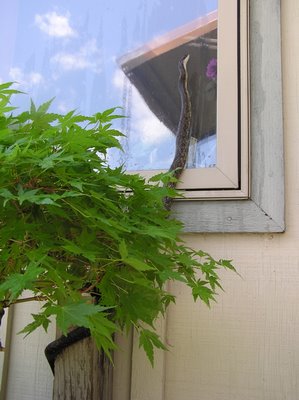
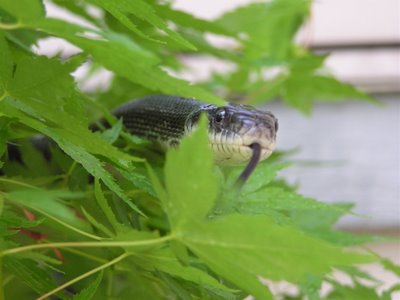
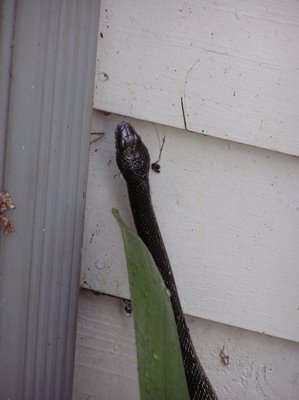
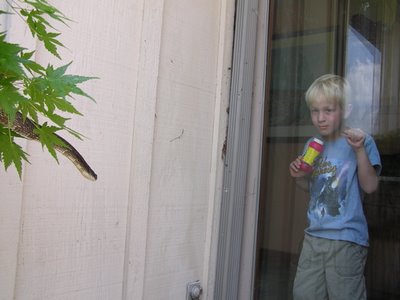 Liam watched warily from behind the foyer window, but later he came out and blew bubbles over the snake as it lay sunning on the lawn. He's cool with snakes, as is Phoebe. In this, as in so many things, kids take their cues from their parents. He sees me calmly handling the animal, and he figures it's all right.
Liam watched warily from behind the foyer window, but later he came out and blew bubbles over the snake as it lay sunning on the lawn. He's cool with snakes, as is Phoebe. In this, as in so many things, kids take their cues from their parents. He sees me calmly handling the animal, and he figures it's all right.